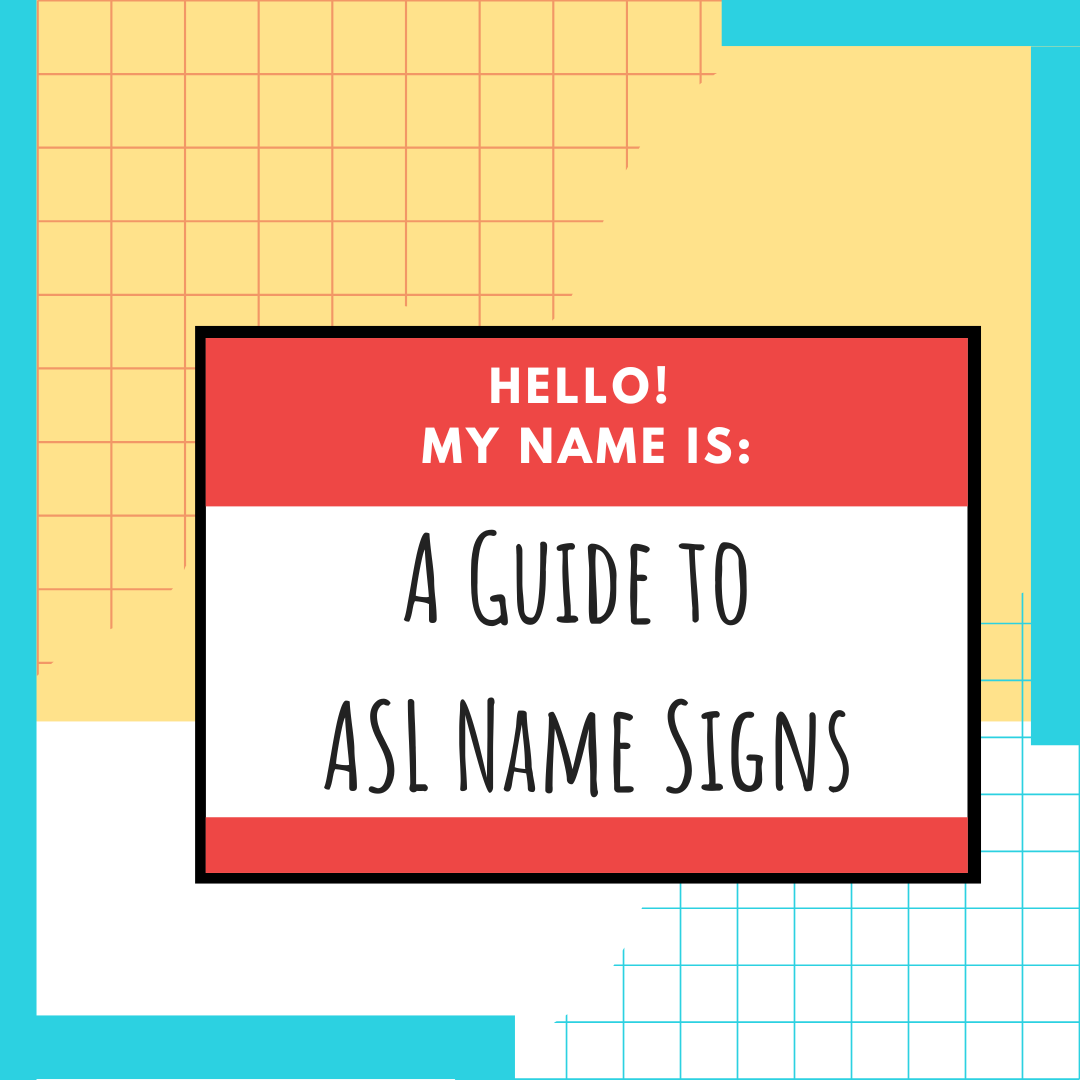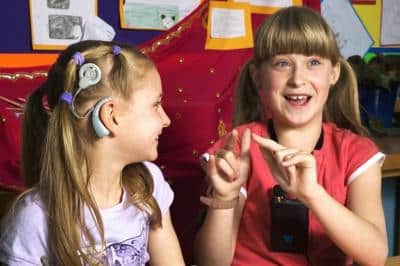
How to be an Ally for the Deaf Community
- by Katelyn Cheng
![[Image Description: Deaf girl wearing cochlear implants is interacting with hearing girl who is wearing a microphone. Photo Credits: BBC | GETTY IMAGES]](https://www.startasl.com/wp-content/uploads/elementor/thumbs/girl-talking-and-signing-psyxve260gzp33jqqzmkgfok97x01u0te8vh2xqwhs.jpeg)

What does it mean to be an Ally? An Ally, according to the Merriam-Webster dictionary, is defined as to join (yourself) with another person or group to get or give support. So, what does it mean to be a Deaf Ally? A Deaf ally is a person usually who is hearing, joins the Deaf community and shows support and promotes equality for Deaf people. According to Handspeak, “Hearing allyship is when they support Deaf people, leaders, and advocates, stand by them, or work with them in advocacy. They may be teachers of the Deaf, CODAs, ASL-English interpreters, friends, advocates, and/or individuals.” A question most people have is, “Can hearing people be part of the Deaf community?” The answer is members of the Deaf community include deaf and hearing people (including hearing family members, interpreters, ASL teachers, etc.) These people do not have to be deaf themselves and can be part of other cultural groups, but they support the goals of the Deaf and help to achieve them. Keep reading below or for more information, you can read more here on how you can get involved.
How can someone become an ally? To be an ally, it is important to be open-minded, educate, and immerse yourself within the Deaf community. In the Deaf community, not only is American Sign Language important since this is the primary language to communicate, but also the Deaf culture plays a significant role. I will mention a few pointers below, but you can also read more about it here. Every country has their own unique culture and each culture differs from each other. The Deaf culture is very different from the hearing culture, so keep in mind the key points of the Deaf culture below:
- Be direct. There is no such thing as “beating around the bush”. If you have something to say, then say it. Taboo questions are totally appropriate to ask. Basically, there is no filter when it comes to expressing or asking questions.
- Make constant eye contact. It is actually considered rude to not make eye contact. Have you ever heard of the saying, “My eye is my ear, my hand is my mouth”? Deaf people communicate through using sign language and rely a lot on body language and facial expressions.
- Turn your voice off. Deaf people cannot hear or speak. It would be considered mindful to not start talking without giving the effort to communicate using sign language. In the Deaf community, it is all about signing, using gestures, body language, facial expressions to communicate with each other. It is okay if you are a beginner and is just starting to learn ASL. Deaf people understand and are patient. They are willing to slow down so you can understand. Communicate with Deaf people how they communicate with each other.
- Be mindful that there are different ranges of deafness. Every Deaf and hard of hearing (D/HH) person is different and has different stories of how they grew up. Some knew sign from an early age whereas others learned sign later in life. Do not assume every D/HH person is the same and all have the same stories. Be mindful of each person’s stories. Certainly do not assume all deaf people know American Sign Language because some may not know how to sign at all. You can read more about “Deaf Culture | What does “D”, “d”, and “d/Deaf” mean in the Deaf community?” Also, understand that ASL is not universal – read more about it here; therefore there are Deaf people from other countries who will sign their own sign language. Keep this in mind too.
- Identity. This is a major one. Deaf is an identity, not a hearing loss or a disability, that Deaf people need to be “fixed”. Deaf people are proud of their identity and are proud to be Deaf.
- Don’t assume D/HH people need help unless they ask for it. There is a quote, “Deaf people can do anything hearing people can, except hear.” D/HH people want to be independent just like everybody else. Yes, D/HH people cannot hear but it does not mean they are incapable.
- Don’t assume all Deaf people can lipread. Some can lipread whereas some cannot lipread at all. This is based on how the person is raised and whether or not he or she grew up orally.
Deaf culture is significant but also knowing ASL is just as important too. One of the ways to become an ally is learn American Sign Language in order to communicate with Deaf people. There are many ways you can learn ASL. Start ASL provides ASL 1-3 courses that you can sign up with to take these classes. Check out the Top Ten and Top 25 Signs to get you started. It important to practice ASL with other people. It is not just all about learning ASL, but it is also about being a part of the Deaf community. To be a part of the community, attend Deaf socials, Deaf panels, Deaf webinars, etc. Get yourself educated about the Deaf community, Deaf culture, and who Deaf people are. Deaf socials are very popular in the Deaf community, so attend the socials to make friends and to practice your ASL. Yes, it is important to learn ASL, so you can effectively communicate with your Deaf peers, but also understand where ASL is derived from and its history. The more hearing people immerse themselves in the Deaf community, the more knowledgeable hearing people become and are more open-minded about Deaf people. If you do not know sign, that is okay, there are many other ways you can communicate with Deaf people. Deaf people will use gestures or point to the drink or food they want to order. Also, using the phone or writing on paper is an option. Be mindful and considerate. It is interesting to see signing, but do not come off as staring. This becomes rude.
Also, please do not say “never mind”, “I’ll tell you later,” or “it’s nothing important.” These words make D/HH people feel left out and excluded. D/HH people should be included and know what is going on just like everyone else. Do take the time to repeat what someone said or what is going on. D/HH people appreciate if they feel included and a part of the conversation. However, don’t over accommodate, meaning yes, D/HH people wants to feel included, but don’t overdo it. D\HH people do not have special needs or need special attention.
In a work place, it is important to keep in mind what a D/HH person needs to be successful, this means providing appropriate accommodations for the D/HH person. The accommodations include closed captioning on videos or in virtual meetings. Without closed captioning, the D/HH person will easily get lost and miss everything being said during the meetings. Also, D/HH people best learn and do well if they are trained properly step by step and can visually see how the process works. A training document helps some, but the document will miss out small details that need to be explained in person. Phone calls are usually very challenging, so the best way to approach this is either by going to the D/HH person’s office to explain in person, use Slack, or get on Zoom/Google Meet where there is captions available. D/HH people communicate/comprehend best when they are are able to see the facial expressions and body language, so D/HH people appreciate when the cameras are turned on. In terms of feedback, D/HH people not only hear them in person but also written feedback helps a lot too. Deaf people cannot speak or hear at all and will need an ASL interpreter, so do please provide an interpreter upon request. Also, do not speak too fast. It is important to slow down and enunciate clearly. Face the person you are speaking with. If the person has trouble understanding, repeat and paraphrase the explanation if necessary. Be patient.
Start Learning ASL Today!
 Ready to start learning real American Sign Language and not just basic signs? Do you want to be a part of the vibrant Deaf community? Check out our Free ASL 1 Course or our Complete 4-Level ASL Course options and start learning ASL today!
Ready to start learning real American Sign Language and not just basic signs? Do you want to be a part of the vibrant Deaf community? Check out our Free ASL 1 Course or our Complete 4-Level ASL Course options and start learning ASL today!








